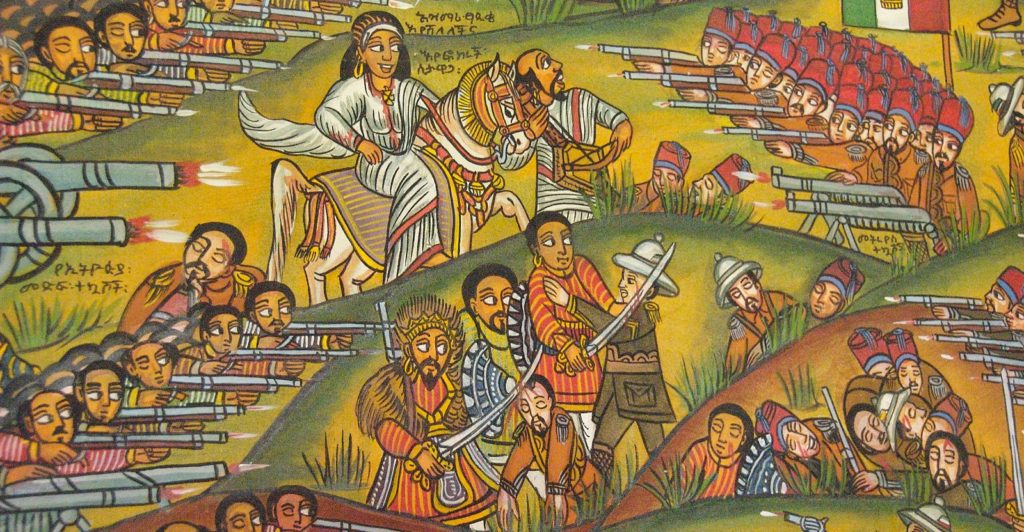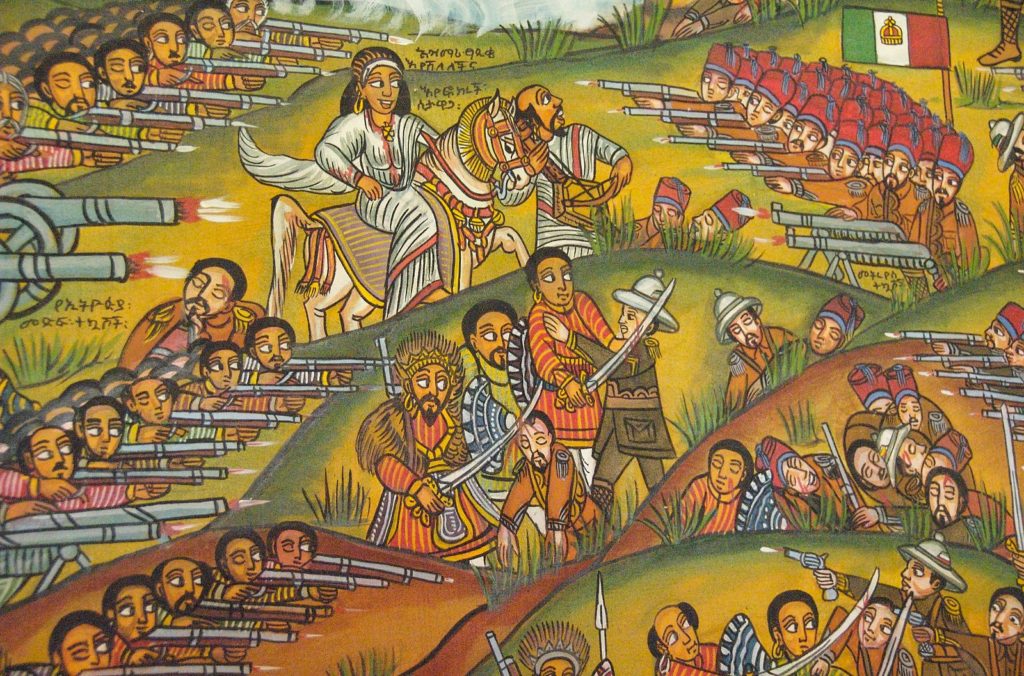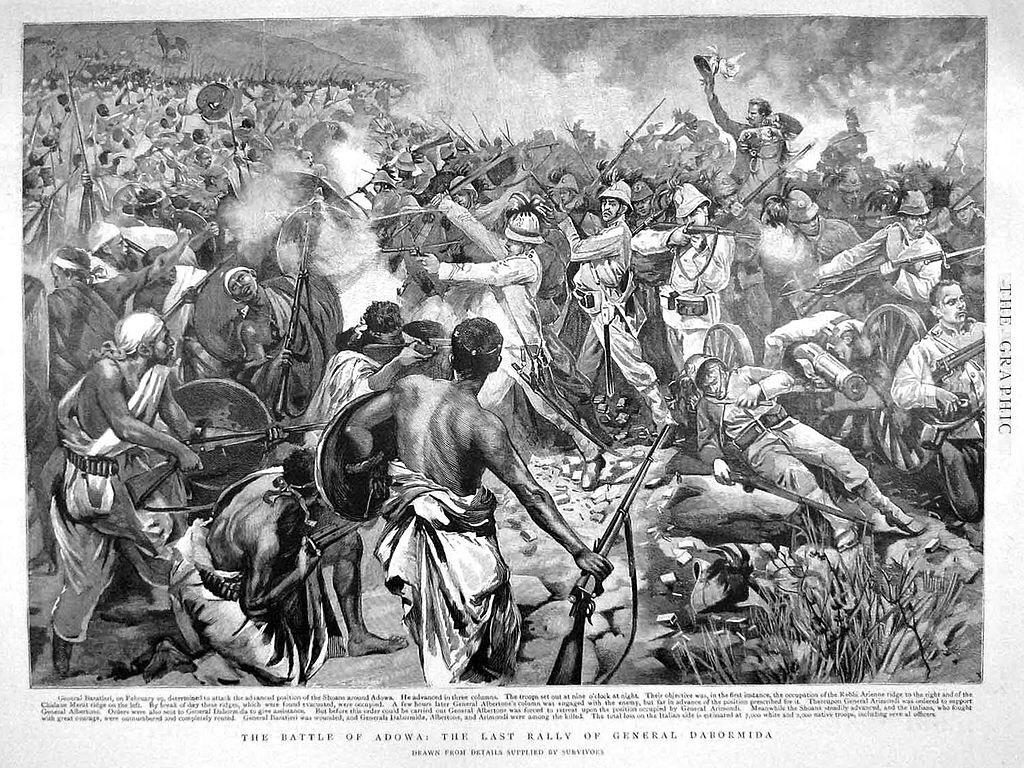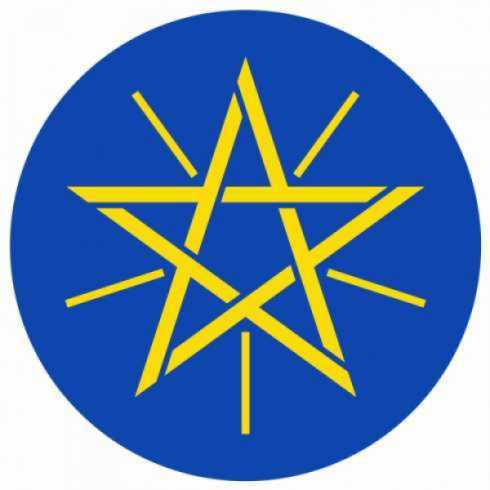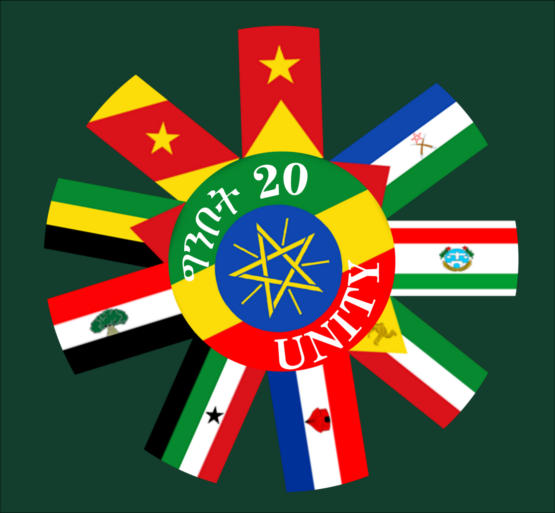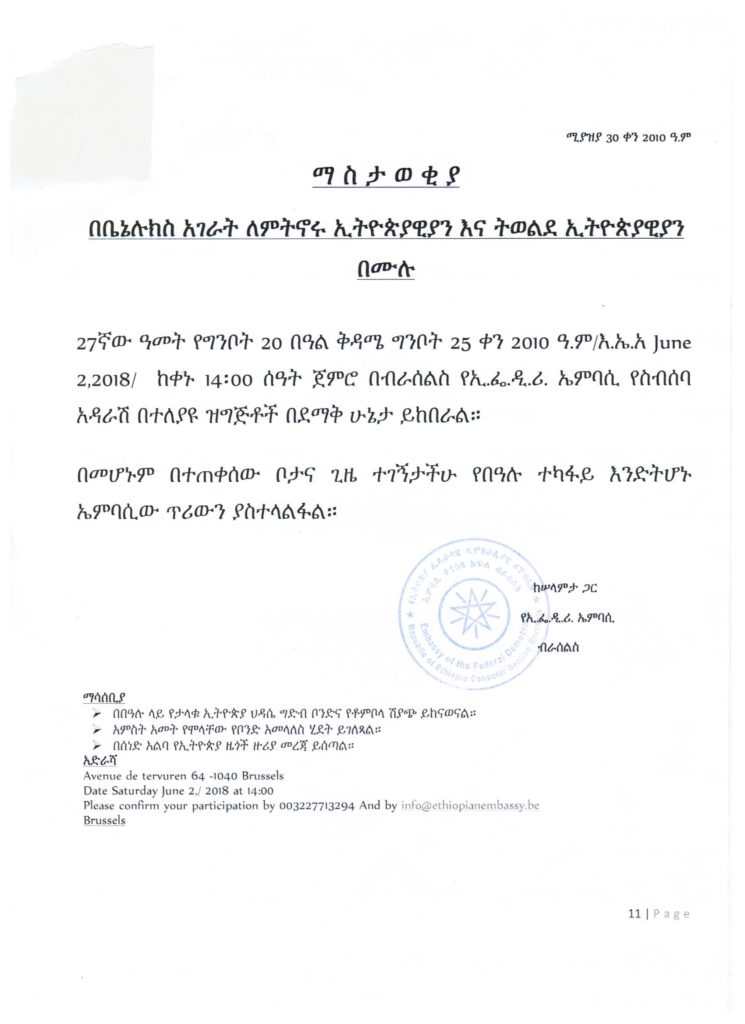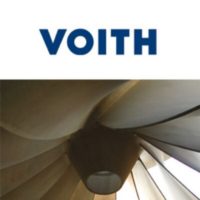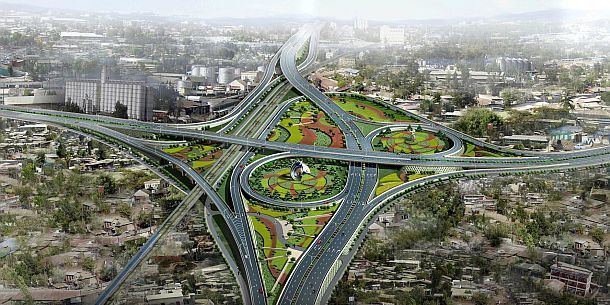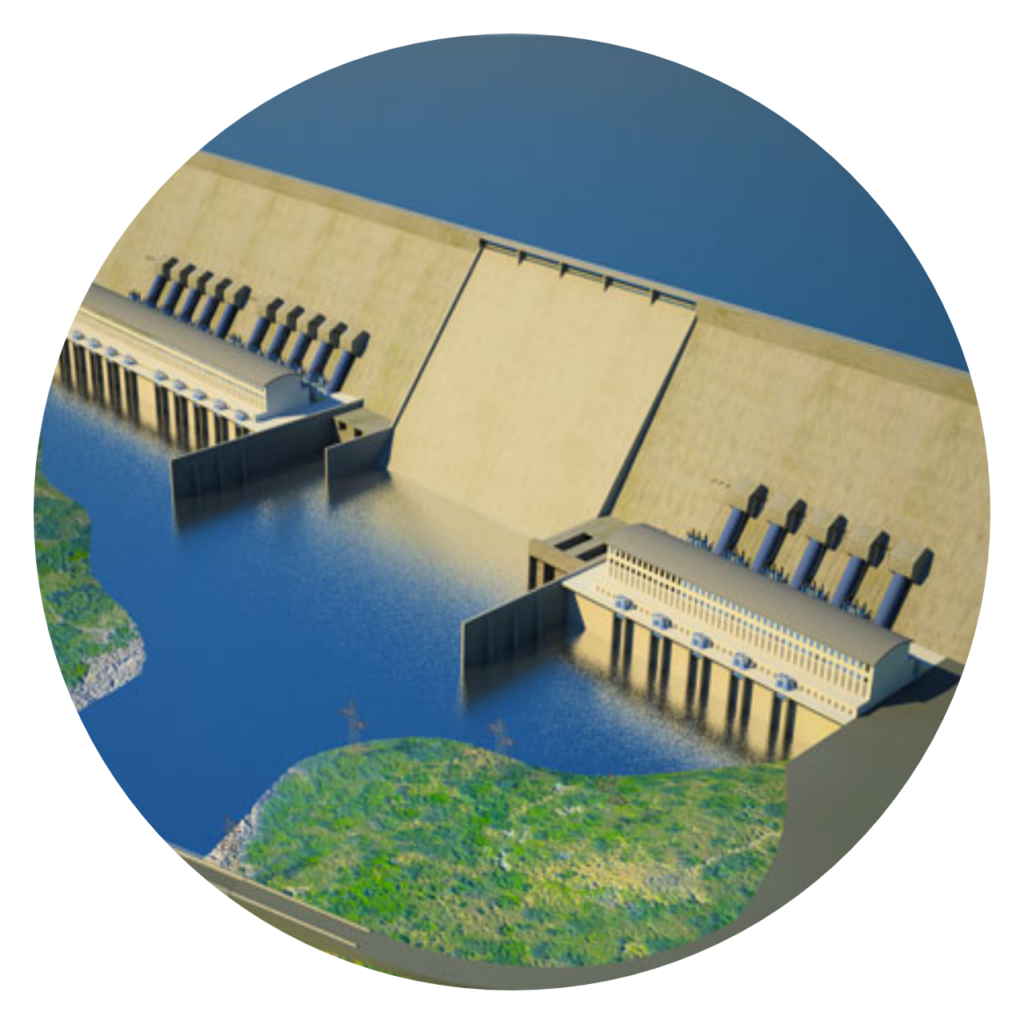The volume of milk production in Ethiopia has tripled over the last eighteen years. However, the productivity of the dairy sector remains low due to local challenges. Since the industry is at a turning point in its history, with a shift from public sector involvement towards private sector participation, new investors have abundant opportunities to develop the industry and tap into the rapidly-growing local market. This article was originally published in the 10th issue (April 2018) of The Ethiopian Messenger, the quarterly magazine of the Embassy of Ethiopia in Brussels.

Over the last decade, the dairy sector in Ethiopia has shown considerable progress. Ethiopia holds immense potential for dairy development due to its large livestock population, a favourable agro-ecological situation for improved, high-yielding animal breeds and fodder production for livestock. There are 11.4 million milking cows in Ethiopia, and the volume of milk produced is about 3 billion litres-this figure used to be less than 1 billion 18 years ago. The dairy sector accounts for 40% of the agricultural GDP and 12-1 16% of the national GDP, which is twice as high in neighbouring countries in Eastern Africa. Given the considerable potential for smallholder income and employment generation from high-value dairy products, a vibrant dairy sector can contribute significantly to achieving the Sustainable Development Goals of the country.
Policy/Livestock Master Plan and Production Boost
Over the past eight years, the Government of Ethiopia has prioritised the transformation of the agricultural sector as part of the national Growth and Transformation Plan (GTP). The introduction of GTP II 2015–2020 was followed by a roadmap that comprises investment interventions bundled together in the Livestock Master Plan (LMP), which included a “Cow Dairy Development Roadmap” aiming at significantly increasing milk production. This plan has two tracks to reach the goal of substantially higher milk production: 1. For the traditional smallholder dairy farming system, the proposed interventions are crossbreeding with exotic dairy breeds through AI and synchronisation, and better feed and health services. 2. For the commercial dairy farming system, the aim is to bring more crossbred cattle into the farms, expanding the number of farms, increasing the availability of forage and concentrated feeds and improving the marketing and processing of milk. The implementation of this plan should result in a 93% increase in milk production. This increase will not only create opportunities for supplying more dairy products to Ethiopian consumers but will also pave the way for export of dairy products. A milk surplus of 2.5 billion litres is expected to be available for export in 2020. Ultimately, the contribution of the dairy sector to GDP is expected to rise from 28 billion ETB in 2014/15 to 52.9 billion ETB in 2020.
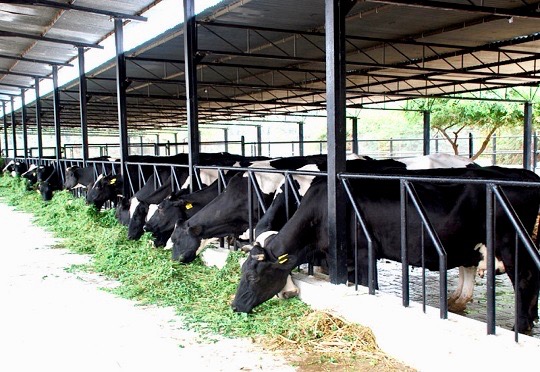
National dairy production, processing, value chain structure and government inputs
In Ethiopia, 11.4 million milking cows are currently producing 3,044,977 tons of milk every year. Ethiopian dairy cattle population is distributed over all areas of the country, but the four regions with the highest number of milking cows are Oromia (44%), Amhara (17%), SNNP (22%) and Tigray (9%). Moreover, milk production is mostly located in the highlands of Ethiopia, as only about 10% of the total milking cow population is found in lowland areas. Also, nine major milk-production which have the best potential for value chain and dairy sector development, called milk sheds, were established in the country’s larger cities (Adama-Asella ADA/Bishoftu, the Great Addis, Ambo-Woliso, Humera, Jimma, Bahir Dar-Gondar, HawassaShashemene, Makelle and Dire-Dawa). The dairy value chain structure is organised in such a way that milk processors collect raw milk from dairy farms, private milk collectors, cooperatives and unions. Dairy cooperatives play a significant role in milk collection. The size of a single cooperative range between 20 and 400 farmers. Unions serve as umbrella organisations for 5-30 cooperatives. Dairy processing is booming in Ethiopia. Currently, there are more than 50 active dairy processors in the country, and most of the companies operate in the vicinity of the capital/Addis Ababa. The average per capita consumption of dairy products of the country is estimated at around 20 litres.
The primary input for the dairy sector is breeding and genetics. In consequence, the Government established a National Artificial Insemination Centers (NAIC) with the objective of improving milk production in local cattle breeds by producing and distributing quality semen from genetically enhanced bulls. The government primarily delivers veterinary services/inputs in the country. For instance, in 2012 there were a total of 9,711 animal health professionals, 256 at the federal level and the remaining 9,455 distributed across regional states. The other input for dairy sector development is old chain logistics and equipment. The number of milking equipment, tractors and machines is limited in Ethiopia, but the increase in herd size in the major milk-sheds is paving the road for more milking machines on farms and investments in harvesting equipment. In Ethiopia, larger farms in need of loan inputs for investment may have access to credit based on collateral. Development Bank of Ethiopia (DBE) may provide loans up to 70% of the total investments depending upon the bankability of the project. The Cooperative Bank of Oromia (CBO) also works with dairy farm cooperatives. CBO also collaborates with various financial institutions, like the Rabobank in The Netherlands, to improve skills and knowledge in agro-finance.
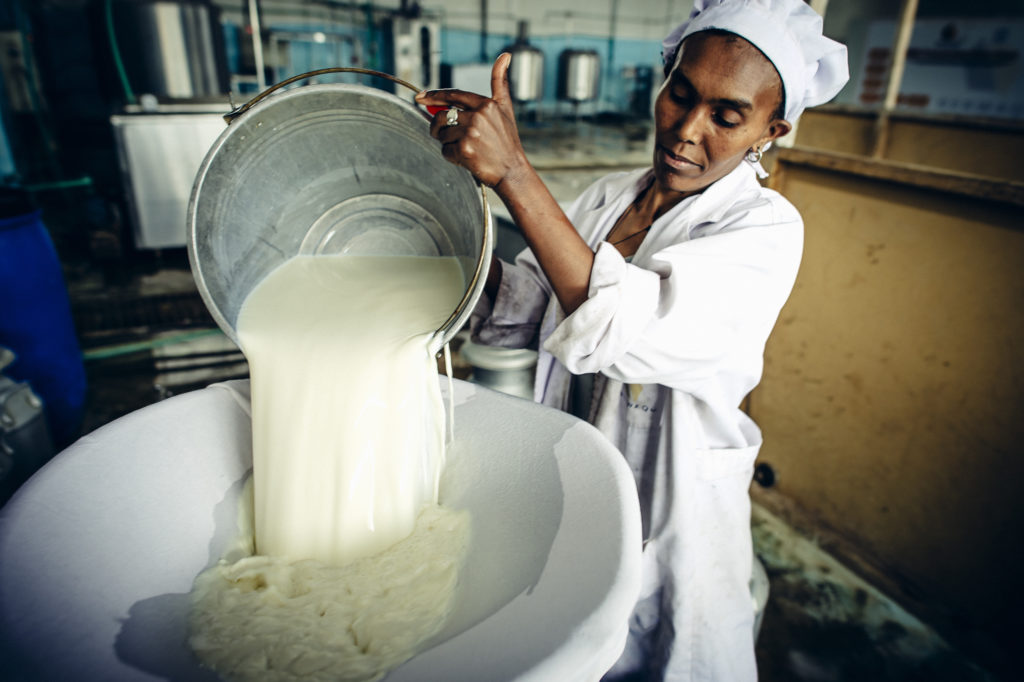
Lucrative domestic market
Ethiopia is one of Africa’s rising economies, with a double-digit economic growth rate in GDP in the past decade. The same is true for the potential growth in the consumption of dairy products. The rapidly increasing population and growing urbanisation rate are resulting in a shift in demand for dairy products. Dairy development can also lead to income generating activities in the rural areas, increasing farmers’ incomes and employment opportunities. This is one of the reasons for the launch of dairy processors in the last decade. Ethiopia holds immense potential for dairy development. Due to the favourable dairy policy of the government, the dairy sector in Ethiopia is expected to continue growing over the next one to two decades. Besides, the convenient agroecological situation of the country – fertile soil and high precipitation create right conditions for fodder production, with excellent climate for highly productive dairy cows in the highlands – offer other advantages for the growth of the sector. Moreover, since the formal dairy value chain is still in its early stages of development, new investors have abundant opportunities to develop and modernise the industry further.
Challenges and opportunities of the sector
Despite these assets, the productivity of the dairy sector is disproportionally low due to some dynamic economic, technical, and institutional challenges. The challenges of the Ethiopian dairy farming are a shortage of feed/poor ration formulation, scarcity of fodder, a low milk production per cow, a lack of chilling facilities on a farm and the fact that the majority of dairy farmers are smallholders (1-3 cows). Other limitations include inadequate access to finance, weak linkages between chain actors, a limited private sector, limited AI services and animal diseases that hinder. However, the problems listed above can also help foreign direct investors and traders to quickly understand which gaps they can fill, as the Ethiopian dairy sector is at a turning point in its history, with a shift from public sector involvement towards private sector participation. There are ample opportunities for foreign companies in dairy farming, dairy processing, business development and financial services. In Ethiopia, entrepreneurs should establish and introduce new knowledge and eco-friendly technology in commercial feed and fodder production, supplying young stock, AI services and upgrading genetics, health, cattle-housing design and farm equipment for milking and harvesting. This will benefit both the investor and the country in transforming the infant dairy sector to a modern dairy value chain industry with adequate economies of scale and backward and forward linkages.
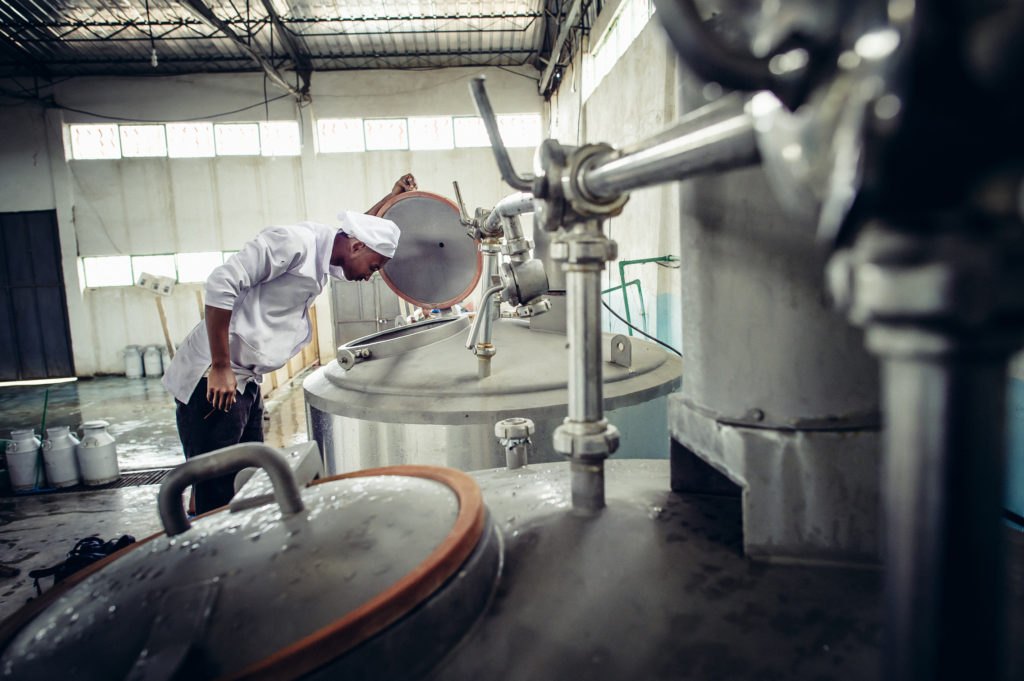
Investment requirements, incentives and guarantees
The Ethiopian Investment Proclamation sets a minimum capital requirement on foreign investors as USD 200,000 for a single investment project by a foreign investor, USD 150,000 if joint investment with a domestic investor and no capital requirement for reinvestment of profit or dividend. The Ethiopian investment code offers the following income tax exemption incentives for investment in livestock farming: • Up to 9 years income tax exemption. Additional two years exemption if 60% of the product is directly exported or supplied to the exporter.
• An additional 30% deduction for three consecutive years if investment in underdeveloped regions as defined under Investment Regulation No. 270/2012.
Besides, for investment in industrial/ integrated-agroindustrial parks, the following incentives will be provided:
• 10-15 years income tax exemption for development of industrial parks depending on park location (10 years if in Addis Ababa or Special Zones of Oromia surrounding Addis Ababa, and 15 years in other areas. • 60-80 years land lease right at a promotional rate; with sub-lease right.
• Reliable electricity at globally competitive rate-government avails dedicated power substation for industrial parks. Other incentives to foreign investors include duty exemptions on the import of capital goods, construction materials, spare parts with a value up to 15% of the total value of capital goods (100% of total value for industrial park enterprises that are fully exporters), and motor vehicles required for investment operation, as well as on the raw materials needed for the production of export commodities, and personal effects for residents in industrial parks. Moreover, investors buying the above items from the local market can seek a refund of the duty paid. There is also an export duty exemption-on all products except semi-processed hides and skins.
Investors also have the rights to remittance of capital in convertible foreign currency and carry forward any loss incurred within the period of income tax exemption for half of the income tax exemption period after expiry; the maximum is five years and customer facilitation through bonded warehouse and voucher schemes. The Ethiopian Investment Commission also provides investment facilitations via one-stop shop and after-care service. The Ethiopian constitution and investment code offer guarantees to foreign direct investments in the country and Ethiopia is a signatory to Multilateral Investment Agency (MIGA), World Bank Affiliate Group and concluded Investment Protection Agreement with the Benelux countries. Ethiopia has also signed an Avoidance of Double Taxation Agreement with The Netherlands. Given the above opportunities and incentives, the Ethiopian Government highly encourages the Ethiopian Diaspora and foreign investors to invest in the dairy sector, independently or in a joint-venture and tap into the lucrative domestic dairy market and potential for export of dairy products.
 Water and Foreign Ministers of Ethiopia, Egypt and Sudan meet to discuss the Grand Ethiopian Renaissance Dam (GERD) in Addis Ababa on Tuesday 15 May.
Water and Foreign Ministers of Ethiopia, Egypt and Sudan meet to discuss the Grand Ethiopian Renaissance Dam (GERD) in Addis Ababa on Tuesday 15 May.
